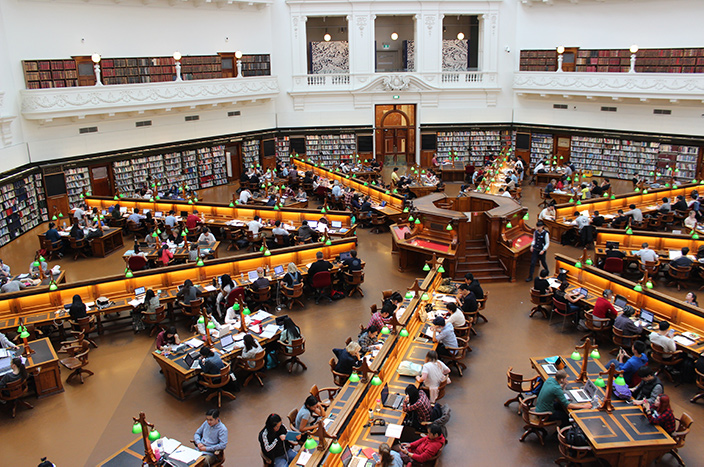2 In 5 Educational Institutions ‘Not Confident’ They’ll Meet Their Sustainability Targets – New Research Reveals
 ● A new white paper shows just 1 in 10 higher and further educational institutions are ‘very confident’ they’ll meet government-set carbon targets
● A new white paper shows just 1 in 10 higher and further educational institutions are ‘very confident’ they’ll meet government-set carbon targets
● 77% state finance as a barrier to becoming a ‘green campus’ and almost a third (31%) blame a resistance to change within the institution
● 79% of prospective students want institutions to have clear strategies for climate change
● New definition for green campus created.
New research from law firm Shakespeare Martineau, supported by planning consultancy Marrons, show that just 1 in 10 higher education (HE) and further education (FE) institutions are ‘very confident’ about meeting their decarbonisations target, in line with the government’s goal of a 78% reduction in emissions by 2035 compared to 1990 levels. 2 in 5 (42%) institutions are either not confident or don’t know whether they will meet these goals.
As part of the Building a Green Campus – what’s stopping institutions report, the firm surveyed more than 130 FE and HE representatives and 1,000 16 to 19-year-olds planning on applying to college or university and, given there is no sector-accepted definition of what a green campus is, looked to provide a standardised definition of this concept.
Taking into consideration all the aspects that prospective students and institutions expect as part of a green campus, experts in education, Shakespeare Martineau, include in its definition of a green campus; the importance of measuring and reporting on energy consumption, as well as working with the community and including sustainability within course curriculum.
 Smita Jamdar, head of education at Shakespeare Martineau, said: “Given how important sustainability is on the ESG agenda, it's worrying to see that so many institutions are predicting to fall short in meeting their decarbonisation targets and that there are several common issues they’re facing.”
Smita Jamdar, head of education at Shakespeare Martineau, said: “Given how important sustainability is on the ESG agenda, it's worrying to see that so many institutions are predicting to fall short in meeting their decarbonisation targets and that there are several common issues they’re facing.”
Key aspects holding institutions back from becoming a green campus were funding or investment (77%), the delivery of campus-wide renewable energy (42%), resistance to change within the institution (31%), expertise or knowledge within the institution and its partners (28%), and a lack of collaboration between parties across the institution (25%). Other answers included issues around leadership buy-in and the age of buildings.
The report also shows that institutions underestimate the importance of sustainability to prospective students.
When choosing their place of study, around three quarters of prospective students would be influenced by: the use of green energy to power campus buildings (73%), sustainability being an important part of learning, teaching and research (78%), and decision makers at that institution factoring in climate change in all decisions (75%).
The firm also found that 7 in 10 (69%) prospective students are worried about climate change and that 79% want institutions to have clear strategies to address it. However, institutions themselves undervalued these factors, with less than half (48%) agreeing they believe that factoring climate change into decision making would be important to prospective students.
To address some of these issues the report provides multiple examples of best practice and solutions for change, including calls for the EAUC’s Standardised Carbon Emissions Reporting Framework to become mandatory once launched to drive accountability. It also places responsibility on government to provide more ‘realistic’ deadlines for grant funding – as many institutions find short timescales unworkable.
The report also recommends that sustainability should be at the forefront of governance and vice chancellor (VC) priorities, becoming a core part of VC reporting and strategy, as well as increased transparency and collaboration between institutions and partners such as lenders, lawyers and consultants.
Kim Ansell, senior consultant and assistant director governance at Advance HE who contributed to the report, said: “Sustainability should be a golden thread through purpose and strategy, with decisions and opportunities seen through a lens of sustainability.
“The universities that are doing well in the THE Impact Rankings are those that have reported on the sustainable development goals most relevant to their strategy, their research strengths and their curriculum portfolio. This focus requires clear strategic alignment and a holistic approach to provide direction for staff and engagement for all stakeholders.”
Smita added: “Becoming a green campus and hitting sustainability targets is not something that can be achieved overnight. However, every institution, regardless of size, has measures within their remit that can help improve green credentials.
“What’s clear is that the solutions to becoming a green campus lie in cross-institutional activities, such as leadership and management, teaching and learning, research and innovation, and services and facilities. These will be challenging to co-ordinate and implement, but also offer a common, cohesive goal for the whole institution to work towards. Collaboration between departments and teams is always going to be more impactful than siloed approaches to change implementation.
“What is great to see is that 90% of the students we surveyed said they would be proud to attend a green campus. But time is running out and changes urgently need to be made across funding, planning, energy, and governance if we are to help meet climate change targets and provide students with a campus, and a future, to be proud of.”



























































